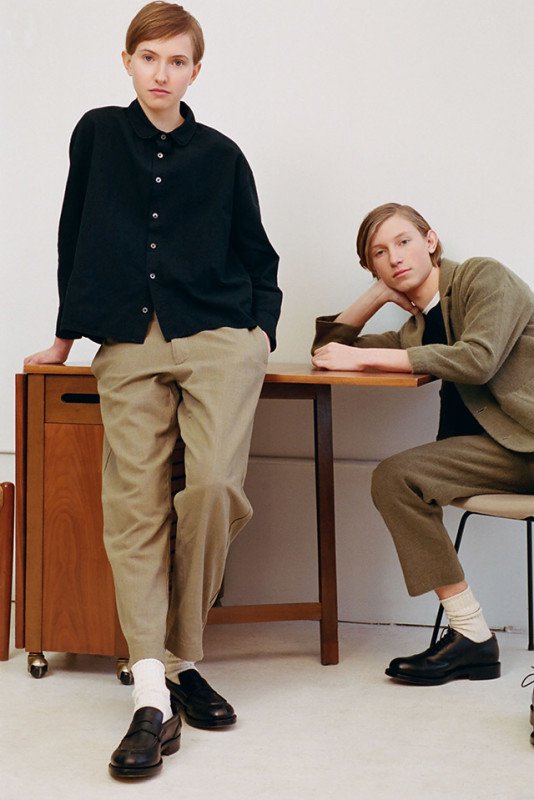Androgyny: How Women Have Taken Style Cues From Menswear
Design by Rachel Lui
Today’s movement towards androgyny and ambiguity in our clothing - while currently experiencing innovative success - was not always historically prevalent. Before the 18th century and the creation of women’s sportswear in Europe, the strict codes of manners required women to wear confining undergarments and layers of fabric, and men various pant-jacket combinations. However, as time moves forward, so too did the ways masculine style influenced women’s clothing.
At some point after upper-class culture reached a level of extreme decadence, the desire of women to participate in more “physically strenuous” activities such as going on walks or horse riding created a need and a market for clothing that allowed freedom of movement outside of regularly-restrictive garments. For example, the woman’s riding habit in the 1700s was composed of a double-breasted overcoat, doublet, and hat tailored with men’s sports clothing in mind. When bikes came into fashion, long bloomer pants descended out from underneath skirts and were eventually worn as their own bottoms in a form of activewear. In our own 20th century, the likes of designers such as Coco Chanel, Jean Patou, Rei Kawakubo, Vivian Westwood, Yves Saint Laurent, and so many more have taken inspiration from the comfort and cut of men’s clothing to revolutionize women’s style. Pants and other labor-specific gear became appropriate for a woman to don in public, and our last few decades have exploded with the ever-increasing want for spandex/jersey-made workout clothing.
Today, women are freer than ever to choose between a skirt or pants in their everyday lives. Streetwear is a popular and largely androgynous style, and the fashion industry is doing its utmost to integrate masculine and feminine styles. So, while our culture is quickly acclimating and celebrating these innovations, woman’s garments taking inspiration from menswear has a long history to explore.
Some of our favorite androgynous brands:
TIBI
Are you looking for something refined and chic, yet relaxed and easy to live in? Tibi’s mission is to balance between your business life and everyday wear while being as comfortable as possible.
BOBBLEHAUS
All garments are made from recycled material, composite, or dead stock; yet all their clothing is trendy and easy to style. Bobblehaus works for a sustainable future by donating to plant trees, and planting their own with every purchase.
IJJI
IJJI focuses on careful and sustainable purchasing with the intention of continuing to grow their brand slowly and responsibly. You can’t go wrong with their beautiful colors and interesting silhouettes.
OFFICIAL REBRAND
By reimagining old garments, OR creates new and interesting clothes for people to buy. They encourage customers to also take their own initiative and modify the garments to their personal preference.
OLDERBROTHER
Olderbrother’s clothes celebrate the “quirky singularity of life”. With their color pallet created with and inspired by the environment, the clothes are made to be soothing against the wearer’s skin. The brand hopes to be a leader to consumers; someone who sets an example and walks ahead into a sustainable future.
Edited by Kieryn Alexander





